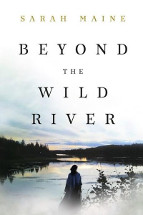Beyond the wild river by Sarah Maine

Hodder and Stoughton, 2017. ISBN 9781473639683
(Age: Senior secondary-adult) Recommended. This is a terrifically
well researched novel, and the story, and indeed the plot, are
finely wrought. I was captivated by the settings, described in rich
detail, from the new city of Chicago to the wild lands and rivers of
northern Ontario. Responding with violence to a burglar, one dark
night on a Scottish estate, a man is killed, a story is constructed,
and a very young Evelyn Ballantyre learns one version of events that
she accepts but with both a sense of having been told what was best
for her to know and a feeling that this version was not the true
story.
From a Scottish estate to the wilds of Ontario, Maine captures a
world of change, taking us from Scotland, on a sea voyage to the
United States in 1893, where the characters visit the Columbian
Exposition in Chicago, described in rich and fascinating detail, and
then go into the wilds of Canada to inspect, we deduce, an
investment of Evelyn's father. This is a fine section, introducing
us to a little known area and history for most readers outside of
Canada or the USA.
The story that ensues is a sequel, in a sense, to that terrible
night on Evelyn's father's estate in Scotland. Strangely, and indeed
oddly, it seems that the characters who were at the estate on the
night of the murder have come together for a journey up the Nipigon
River, in Northern Ontario, 13 years later. We realize that
Ballantyne has controlled all of this, with the characters of the
past all in close proximity for a trip that will be challenging.
Whilst it is not clear to us just what will happen, we are given
plenty of clues so that we are aware that some kind of dramatic
event will take place as the tension builds up day by day on that
journey. The terrain is described in wonderful detail, the
atmosphere of the Nipigon River and the campsites particularly
featuring as places of wonder for the European visitors. We read
about the way that campsites were positioned near the river, how the
fish were caught, and we learn something of the indigenous people of
that region. All of this is absolutely captivating.
That the conflict would be resolved is expected, but somehow the
resolution is just a little tawdry, and the characters involved in
it demeaned by the decisions. Yet in a sense the decisions and
actions are consistent with the characterization. Just as we readers
might have liked a happy ending, her resolution is consistent with
her characterization. Her strengths are in this narrative
consistency, in her richly detailed settings, and in her capacity to
create a story that is reminiscent of its time, its place and the
characters that she has created. This is a fine adult and older
adolescent romantic and historical novel.
Elizabeth Bondar